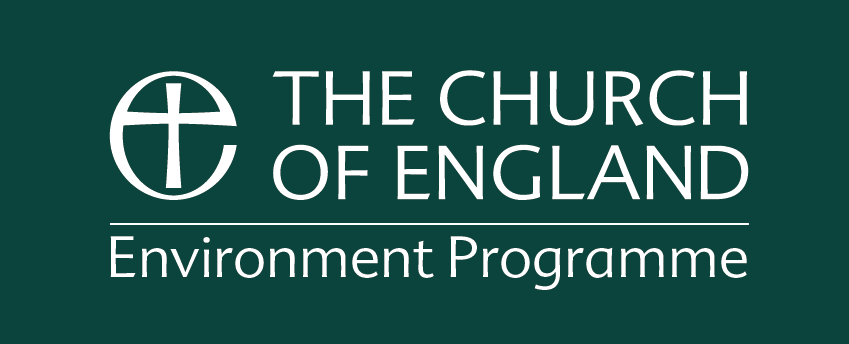What is the Energy Footprint Tool (EFT)?
EFT is a national Church of England tool for churches to record churches’ energy use and calculate their carbon emissions. It forms part of the online Annual Parish Returns.
This helps us reduce our contribution to climate change, a vital part of Caring for God’s Creation.
Each year, churches enter their energy figures from the year before. Once a church has entered all its data, they immediately receive a report and results on their computer or smartphone. This includes:
- The church’s carbon footprint in CO2e (carbon dioxide equivalent)
- a simple assessment of their buildings’ efficiency compared to their size, and compared to how busy the church is. These bands range from A++ (the best) down to G.
In 2021, EFT won a National Energy Award for ‘Innovation of the Year’. The Church of England competed successfully with nine other shortlisted candidates, ranging from utility companies to technology companies to building services analytics.
Why do we need the EFT?
In 2020, the Diocese of Sodor and Man, with the Church of England, set itself the target of achieving net zero carbon (CO2e) by 2030.
The Diocese needs to track progress, by measuring churches’ use of energy. EFT calculates emissions of CO2e from those measurements.
Most of churches’ emissions comes from the energy used by their buildings (mainly electricity, heating oil gas for light and heat). Therefore the energy use of church buildings needs to be radically reduced, while still keeping the church warm and well lit. This means making their buildings more efficient.
How to use the EFT
Annual Parish Returns can be found at Parish Returns.
Log in at Annual Returns Online. Just enter your Username and Password, then you’re into the system, ready to go.
The system opens each year in March or April. Churches need to complete their entries by the end of July, when the system closes to new entries.
Energy use figures can be taken either from energy bills for the whole year, and/or meter readings from the beginning and end of that year. It is helpful to have those bills or readings to hand before logging in.
Energy can be reported in kilowatt-hours (kWh) or the volume on the meter (cu metres for metric meters, 100s of cu feet for old imperial meters). If these figures are not available, it is possible to report the cost. Either quantity or cost is sufficient. However it is helpful to enter both; this helps the system to estimate one from the other for those who have only put in quantity, or only cost.
You will also need to enter any other types of heating such as heat pumps.
Efficiency compared to building use
To access EFT’s efficiency assessments for a church, it needs to have completed the Statistics for Mission sections in their annual return. Some of this data is borrowed by EFT – it will just pop up pre-completed when going on to EFT.
Statistics for Mission include hours of use and numbers in the building. When combined with figures entered in EFT, this shows how efficient the church’s energy use is compared to its level of activity.
Efficiency compared to building size
In addition a floor area for the church is needed, in square metres (= square feet divided by 10). That can be estimated from a plan, or by the church’s Quinquennial Inspector. The Church of England already has this data for many churches. If they do have it for the building(s) being reported, the number will just pop up in the right box. If that figure is not correct, the entry can be amended. Then the system can estimate efficiency compared to building size.
Church halls
Once figures for the church building have been entered, any hall or other building with its own meters should also be reported on. A separate page or pages are provided for that purpose. The system indicates where to go.
Solar panels
The size and any generation by solar panels on the church or hall roof should be reported.
The system works out gross energy and CO2e, then net figures after subtracting any electricity exported from solar panels.
Green energy and offsetting
The system also subtracts green energy from net figures.
It is also possible to report any extra offsetting included in an energy tariff. This is accounted separately from your gross and net footprints worked out as above.
Work-related travel
Information on work related travel may also be entered, to estimate its carbon footprint.
Submitting figures
If not all the data needed is to hand, it is possible to save and come back later.
Once entries are complete, and the ‘submit’ button is clicked, the church’s read-out is returned.
Covid adjustments
As mentioned, 2020 was affected by closures due to Covid, so a calculation was built into the system and totals across the board adjusted accordingly. A++ to G bands for churches’ efficiency were also Covid adjusted.
In 2021, churches were still affected EFT by Covid to some extent. The adjustment for 2021 was harder to estimate than for 2020, because churches were not required to close, though many did. The system will still make an approximate estimate, based on the likely effect of these constraints.
More information and resources
For any questions or help, contact:
Dr Tony Thick
Diocesan Environmental Officer
E: tony.thick@sodorandman.im
T: 01624 843657
For further information and guidance see:


